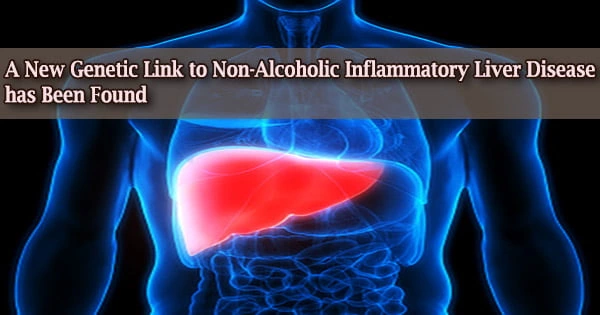The accumulation of fat in the liver that is unrelated to alcohol misuse or other liver illnesses is known as non-alcoholic fatty liver disease (NAFLD). It is most common in overweight or obese people. Early-stage NAFLD is usually harmless, but if it progresses, it can cause substantial liver damage, including cirrhosis.
NAFLD is a symptom of metabolic syndrome and is frequently linked to obesity and diabetes. With the onset of inflammation, it proceeds to non-alcoholic steatohepatitis (NASH), albeit how this happens is currently unknown. NASH can result in serious consequences such as liver failure, cirrhosis, and malignancy.
Now, researchers from the University of Tsukuba have discovered that albino mice with a point mutation in the tyrosinase gene are more prone to NASH than mice without the mutation.
NAFLD progresses through four phases, with the majority of patients only experiencing the first stage, which they are usually unaware of. If not recognized and controlled, it can worsen and finally lead to liver damage in a small number of patients. The main stages of NAFLD are:
- Simple fatty liver (steatosis) – a relatively harmless fat build-up in the liver cells that can only be detected when tests performed for another cause
- Non-alcoholic steatohepatitis (NASH) – a more serious form of NAFLD, where the liver has become inflamed
- Fibrosis – scar tissue forms around the liver and adjacent blood arteries as a result of prolonged inflammation, yet the liver continues to function normally
- Cirrhosis – the most severe stage, which occurs after years of inflammation, when the liver shrinks and becomes scarred and lumpy; this damage is irreversible and can lead to liver failure and cancer
Fibrosis and cirrhosis can take years to develop. To keep the illness from worsening, it’s critical to make lifestyle modifications. NAFLD is known to vary in prevalence and severity among different human ethnicities, with Hispanic cultures having the highest prevalence.
As the point mutation in the tyrosinase gene is the only genetic difference between B6 albino and B6 black mice; our work will facilitate the identification of genetic susceptibility factors for the development of NASH and expand the understanding of the pathophysiology of NASH.
Assistant Professor Hamada
The tyrosinase gene produces an enzyme that affects skin tone by regulating melanin synthesis. In preliminary computer analysis, the team discovered that the prevalence of various point mutations in the tyrosinase gene varies by ethnic group, with the two primary variants being found at high frequencies in Hispanic populations.
As a result, the researchers postulated that tyrosinase gene variations could influence NAFLD and NASH susceptibility and severity.
To test this theory, the researchers looked at a mouse line known as “C57BL/6,” or B6. The tyrosinase gene in albino B6 mice has a single alteration, known as a point mutation. This interferes with the activity of the tyrosinase enzyme, causing albino mice to lose their pigmentation and become white instead of black.
Because dietary cholesterol has a role in the development of liver inflammation, the researchers provided high-cholesterol diets to albino and black B6 mice for 10 weeks. They discovered that black B6 mice exhibited no signs throughout the diet, whereas albino B6 mice had a severe phenotype, establishing liver injury after just one day and progressing to NASH after two weeks.
The researchers also discovered that albino B6 mice had a high level of tyrosinase expression in the small intestine.
“This could affect the susceptibility of the mice to NASH by affecting the uptake of cholesterol in the small intestine,” says senior author Assistant Professor Michito Hamada, “pointing to a potential mechanism for this increased susceptibility.”
“As the point mutation in the tyrosinase gene is the only genetic difference between B6 albino and B6 black mice,” explains Assistant Professor Hamada, “our work will facilitate the identification of genetic susceptibility factors for the development of NASH and expand the understanding of the pathophysiology of NASH.”
After a blood test called a liver function test yields an abnormal result and other liver disorders, such as hepatitis, are ruled out, NAFLD is frequently diagnosed. However, blood testing do not always detect NAFLD. There is no specific treatment for NAFLD at this time, although making healthy lifestyle choices can assist.
















